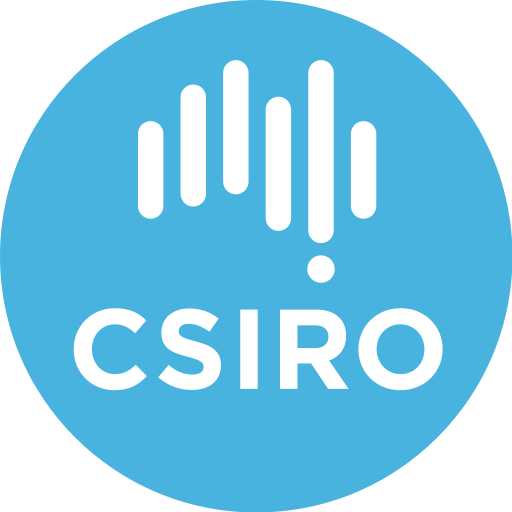Contact for the resource
Great Barrier Reef Foundation (GBRF)
21 record(s)
Type of resources
Topics
Keywords
Contact for the resource
Provided by
Formats
Update frequencies
Status
draft
-
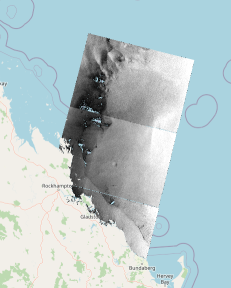
Sentinel-1 SAR medium resolution (approximately 20m-pixel size) reprojected and calibrated product produced by CSIRO under eReefs Phase 5 using the SNAP (Sentinel Application Platform) toolbox. This product was derived from Level 1 IW GRD (VV polarization), placed onto a regular grid using nearest neighbor resampling and radiometrically filtered using a three-pass combination of filters to reduce speckle.
-
Sentinel-3 OLCI full resolution (approximately 300m-pixel size) daily reprojected Level 2P water quality (Chl-a, CDOM, TSS) produced by CSIRO under eReefs Phase 5 using the FUB-CSIRO Coastal Water Processor (detailed description at https://doi.org/10.1016/j.rse.2021.112848). This product was derived from Level 2 geophysical quantities, and placed onto a regular grid using nearest neighbor resampling. Standard Level 1 quality flags have been applied to pre-mask and quality control the data (see file_version_quality_control). Additional algorithm input and output out-of-range flags (in_out_OR_combined_flags) are provided to further quality control the data. These flags have not been applied to pre-mask the data.
-
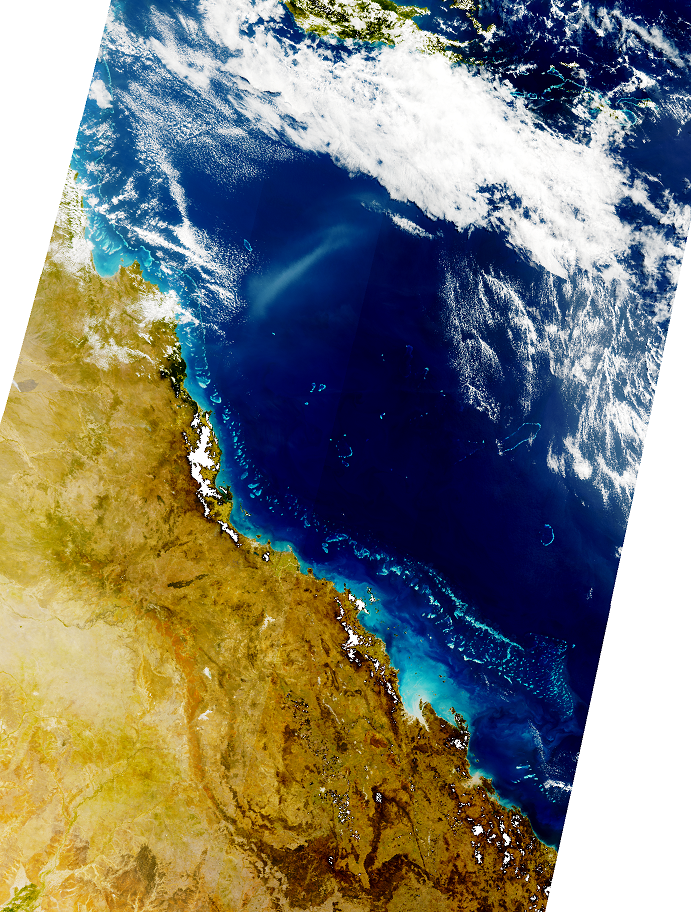
Sentinel-3 OLCI reduced resolution (approximately 1000m-pixel size) daily Level 1B true-colour quicklooks produced by CSIRO under eReefs Phase 5 delivered in GeoTIFF format.
-
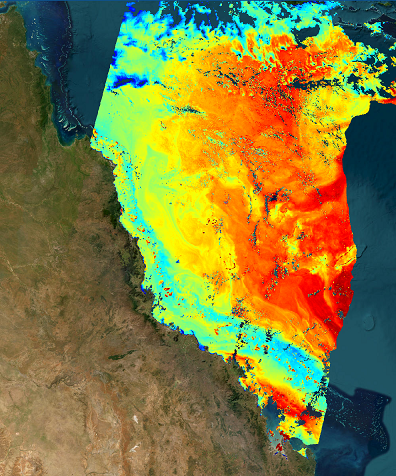
Sentinel-3 OLCI reduced resolution (approximately 1000m-pixel size) daily reprojected Level 2P above-water spectral remote sensing reflectance produced by CSIRO under eReefs Phase 5 using the FUB-CSIRO Coastal Water Processor (detailed description at https://doi.org/10.1016/j.rse.2021.112848). This product was derived from Level 2 geophysical quantities, and placed onto a regular grid using nearest neighbor resampling. Standard Level 1 quality flags have been applied to pre-mask and quality control the data (see file_version_quality_control). Additional algorithm input and output out-of-range flags (in_out_OR_combined_flags) are provided to further quality control the data. These flags have not been applied to pre-mask the data.
-
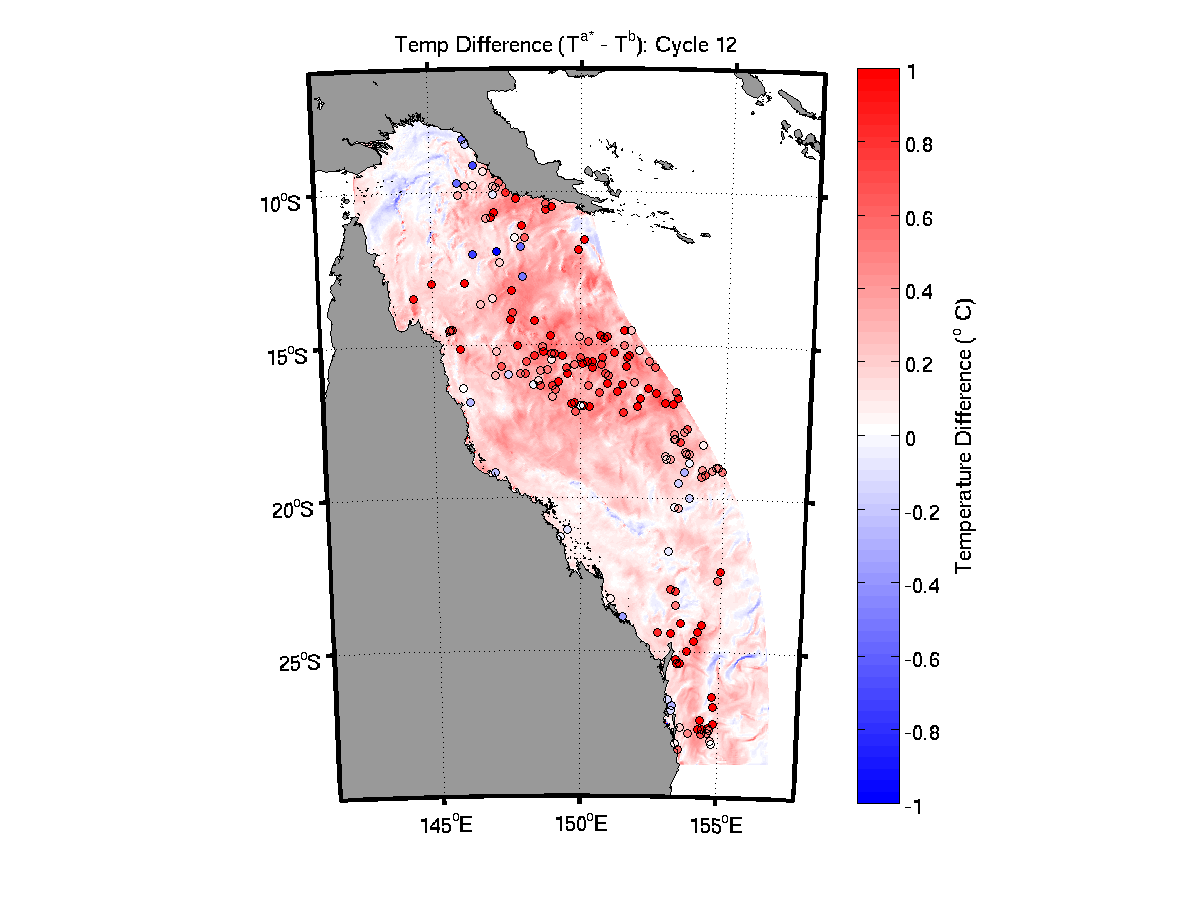
**This sample dataset was decomissioned in May 2022, and is no longer available via the NCI THREDDS server. Please contact the eReefs team if you need access to this data.** This is the eReefs GBR 4 km resolution Data Assimilating (DA) hydrodynamic SHOC model data. The Ensemble Optimal Interpolation (EnOI) system assimilaties a combination of temperature data from moorings (AIMS and GBROOS/IMOS), gliders (CSIRO and IMOS) and SST (GHRSST L3S from IMOS). This product is the first version of a reanalysis undertaken for the GBR4 grid. The DS system is run with a cycle length of 2 days, and assimilates temperature data that fall within a 6 hour window either side of the analysis time. The mean forecast error ranges from 0.4 degrees C in the "dry" season to 0.7 degrees C in the "wet" season
-

**This sample dataset was decomissioned in May 2022, and is no longer available via the NCI THREDDS server. Please contact the eReefs team if you need access to this data.** This is the eReefs GBR 4 km resolution complete hydrodynamic Sparse Hydrodynamic Ocean Code (SHOC) model data v1.85. It is comprised of ALL the tracers that are present in the SHOC model. The output format is non-CF compliant as it is a "standard" SHOC ALL file. It is based on the Arakawa-C grid with velocities on face centres that are oriented relative to the grid while all tracer values and surface elevation values are cell centred.
-
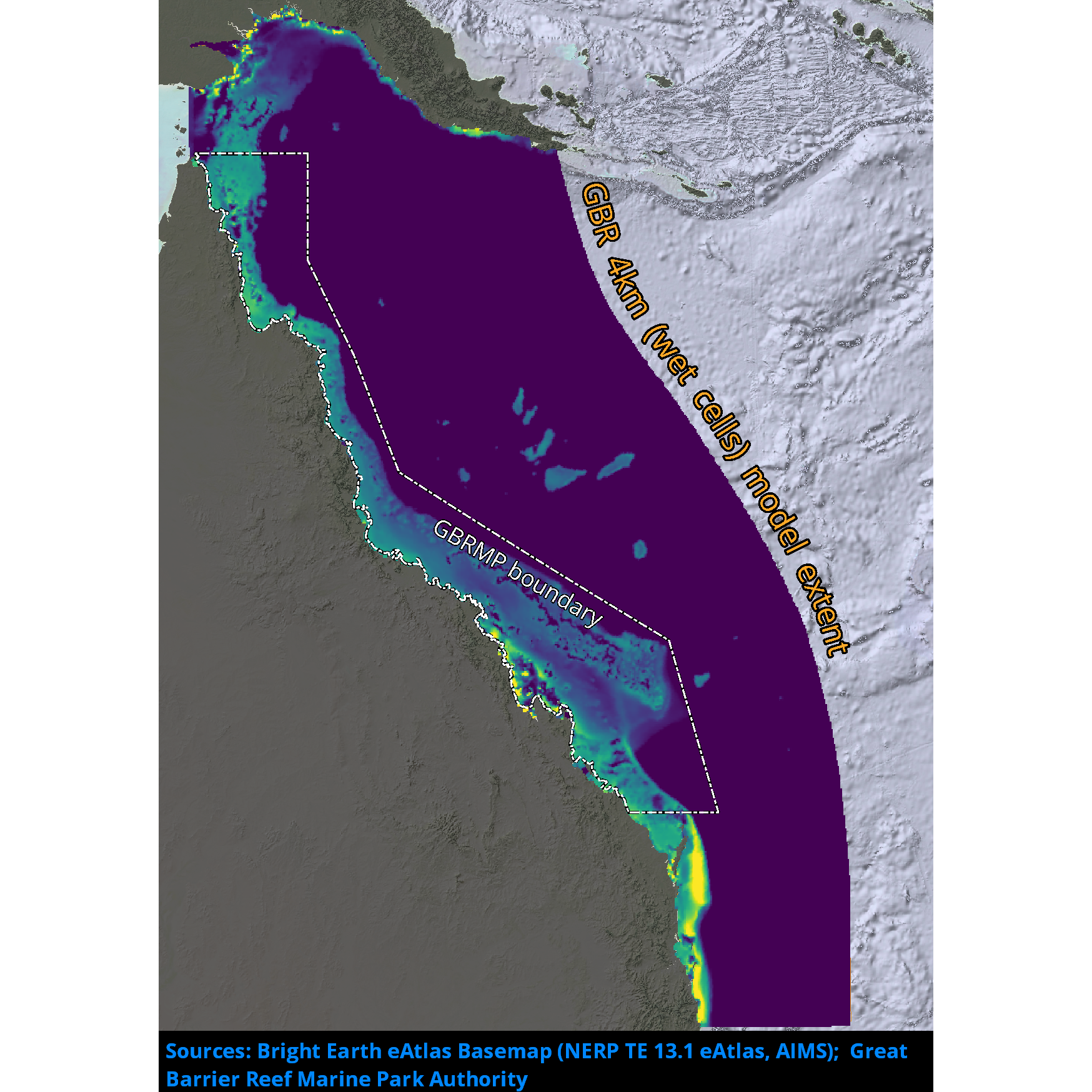
Results from version 3.1 of the 4km-resolution biogeochemistry and sediments model of the Great Barrier Reef (GBR4), forced by version 2.0 of the 4km-resolution hydrodynamic model and by a baseline catchment scenario which is derived from P2R SOURCE Catchments with 2019 catchment condition from December 1, 2010 to June 30, 2018 and from empirical SOURCE Catchments with 2019 catchment condition from July 1, 2018 to April 30, 2019. This model configuration and associated results dataset may be referred to as "GBR4_H2p0_B3p1_Cq3b_Dhnd" according to the eReefs biogeochemical simulation naming protocol. The model ran in hindcast-mode as one of a suite of simulations which included pre-industrial (GBR4_H2p0_B3p1_Cq3p_Dhnd) and reduced-load (GBR4_H2p0_B3p1_Cq3R_Dhnd) catchment scenarios.
-

Results from version 3.1 of the 4km-resolution regional-scale biogeochemistry and sediments model of the Great Barrier Reef (GBR), forced by version 2.0 of the 4km-resolution hydrodynamic model and with catchment forcing from P2R SOURCE Catchments with pre-industrial catchment condition from December 01, 2018 to June 30, 2018 and then Empirical SOURCE Catchments with pre-industrial catchment condition from July 1, 2018 to April 30, 2019. This model configuration and associated results dataset may be referred to as "GBR4_H2p0_B3p1_Cq3p_Dhnd" according to the eReefs biogeochemical simulation naming protocol. The model ran in hindcast-mode as one of a suite of simulations which included baseline (GBR4_H2p0_B3p1_Cq3b_Dhnd) and reduced-load (GBR4_H2p0_B3p1_Cq3R_Dhnd) catchment scenarios.
-

Results from version 3.1 of the the 4km-resolution biogeochemistry and sediments model of the Great Barrier Reef (GBR4), forced by version2 of the Hydrodynamic model and by a reduced-loads catchment scenario which is derived from SOURCE Catchments with 2019 catchment condition (q3b) with anthropogenic loads (q3b – q3p) reduced according to the percentage reductions of DIN, PN, PP and TSS specified in the Reef 2050 Water Quality Improvement Plan (WQIP) 2017-2022 as calculated in Brodie et al., (2017). Further, the reductions are adjusted to account for the cumulative reductions already achieved between 2014 and 2019 that will be reflected in the 2019 catchment condition used in q3b. This model configuration and associated results dataset may be referred to as "GBR4_H2p0_B3p1_Cq3R_Dhnd" according to the eReefs biogeochemical simulation naming protocol. The model ran in hindcast-mode as one of a suite of simulations which included baseline (GBR4_H2p0_B3p1_Cq3b_Dhnd) and pre-industrial (GBR4_H2p0_B3p1_Cq3p_Dhnd) catchment scenarios.
-
DEPRECATED: This dataset has been superseded by GBR1_H2p0_B3p2_Cfur_Dnrt Results from an early version of the 1km-resolution shelf-scale biogeochemical model of the Great Barrier Reef (GBR1). This version of the model was forced by version 1.85 of the eReefs GBR 1 km resolution hydrodynamic model, and made several improvements to the v926 (B1p0) model for: more accurate optical calculations; Normanby – particulate and dissolved loads corrected; Sediment tracer “Dust” added; Oxygen mass conservation part of diagnostics. This model configuration and associated results dataset may also be referred to as "GBR4_H1p71_B1p9_Cfur_Dnrt" according to the eReefs simulation naming protocol, but that protocol was not codified until after this dataset was superseeded, so it is usually referred to by the v924 identifier.
